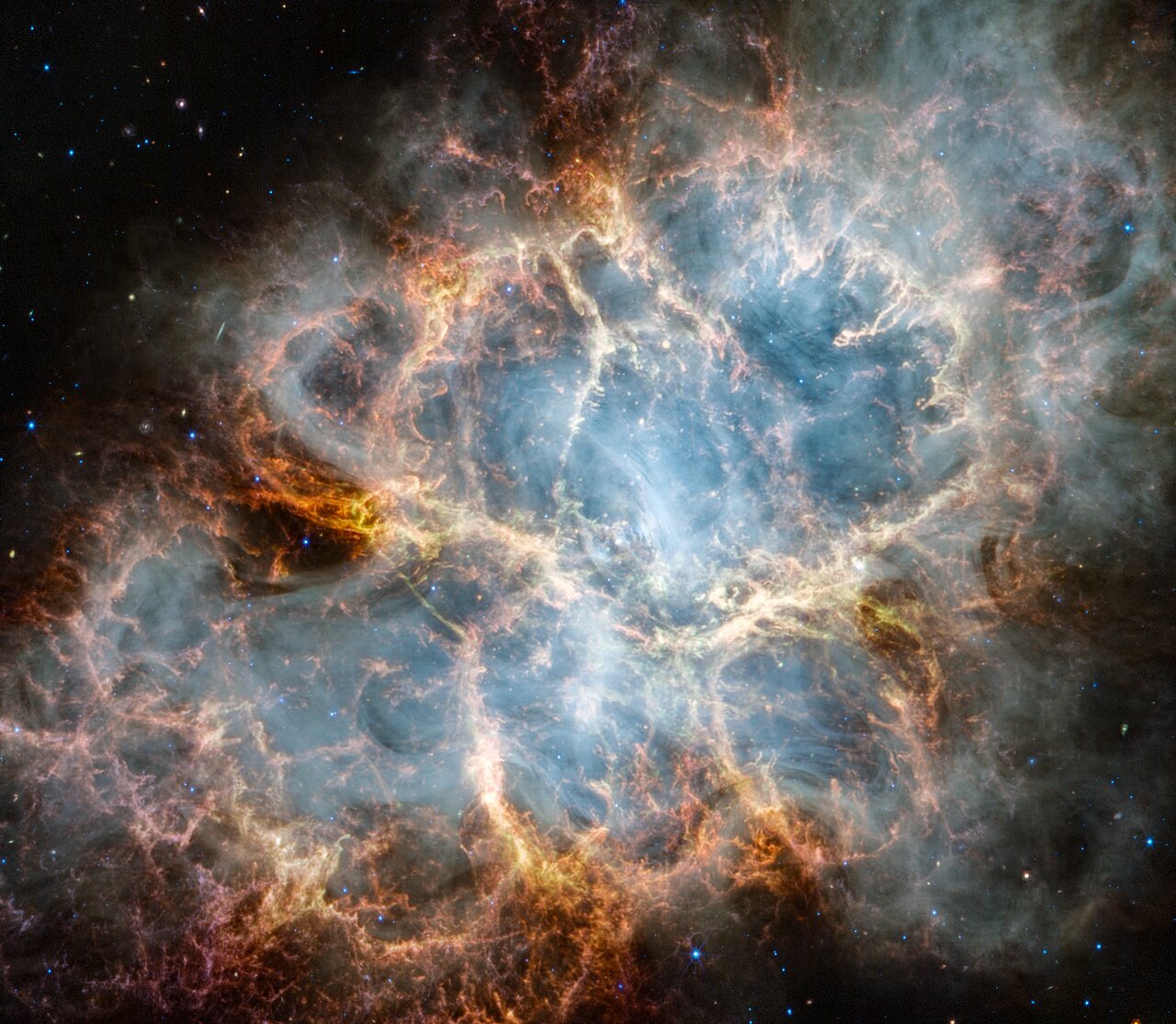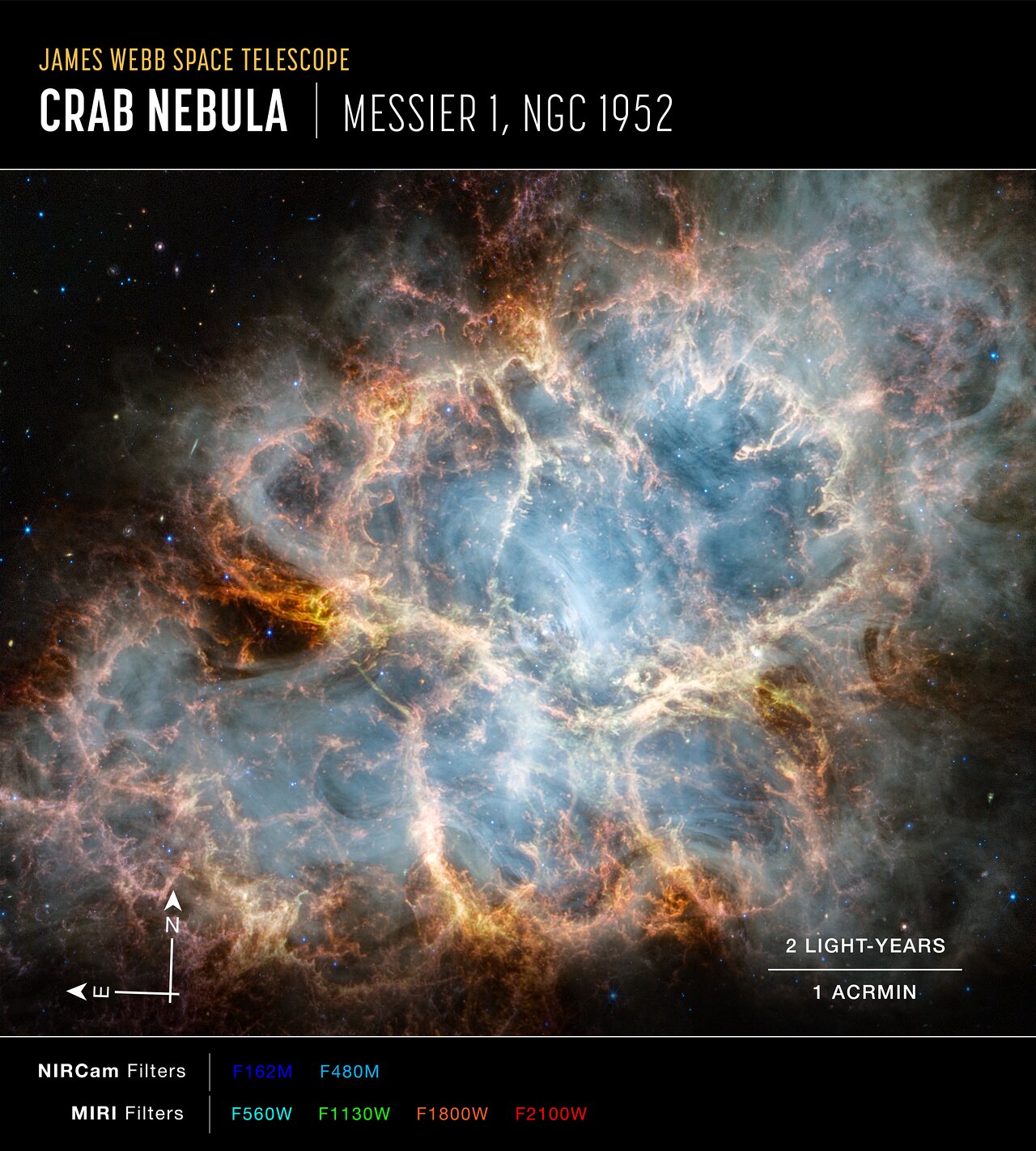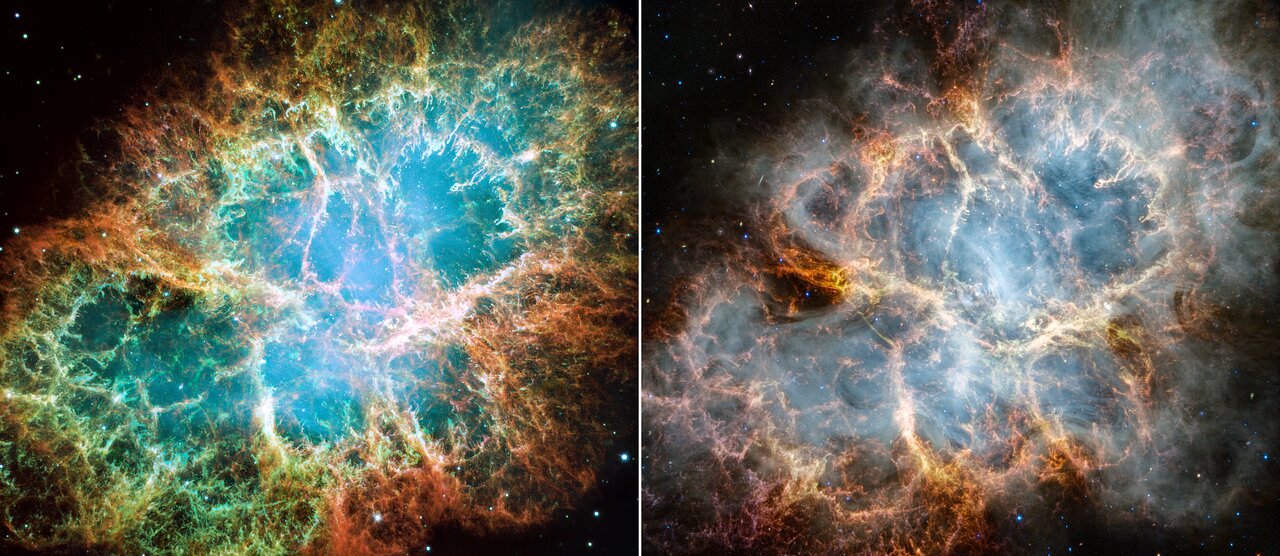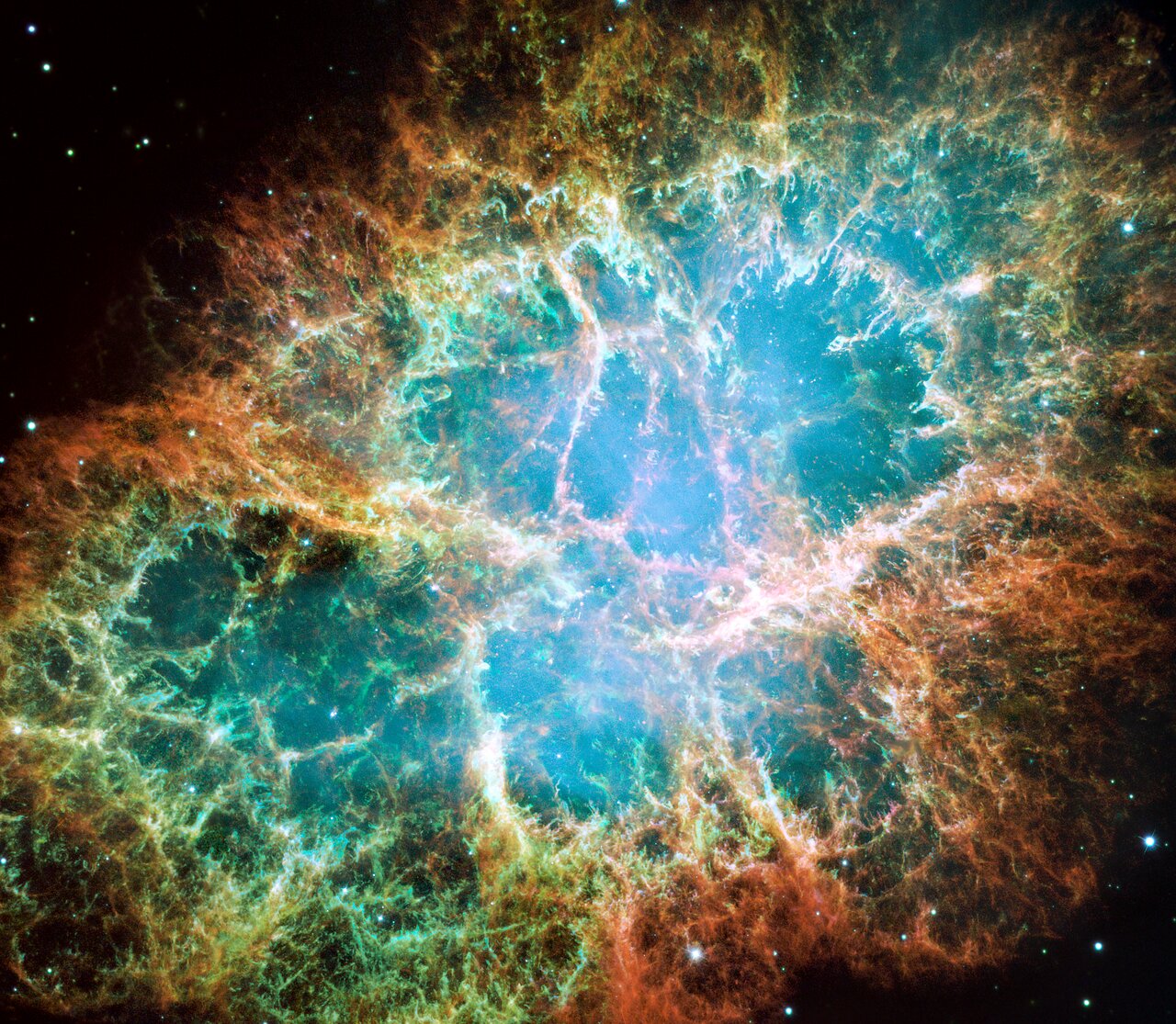James Webb Space Telescope Discovery
Clicking on each image will open the full resolution one. Try it!Clicking on "Raw images" image will yield all the relevant raw images.
The Crab Nebula
The NASA/ESA/CSA James Webb Space Telescope has gazed at the Crab Nebula in the search for answers about the supernova remnant’s origins. Webb’s NIRCam (Near-Infrared Camera) and MIRI (Mid-Infrared Instrument) have revealed new details in infrared light.
Similar to the Hubble optical wavelength image released in 2005, with Webb the remnant appears to consist of a crisp, cage-like structure of fluffy red-orange filaments of gas that trace doubly ionised sulphur (sulphur III). Within the remnant’s interior, yellow-white and green fluffy ridges form large-scale loop-like structures, which represent areas where dust particles reside.
The area within is composed of translucent, milky material. This material is emitting synchrotron radiation, which is emitted across the electromagnetic spectrum but becomes particularly vibrant thanks to Webb’s sensitivity and spatial resolution. It is generated by particles accelerated to extremely high speeds as they wind around magnetic field lines. The synchrotron radiation can be traced throughout the majority of the Crab Nebula’s interior.
Locate the wisps that follow a ripple-like pattern in the middle. In the centre of this ring-like structure is a bright white dot: a rapidly rotating neutron star. Further out from the core, follow the thin white ribbons of the radiation. The curvy wisps are closely grouped together, following different directions that mimic the structure of the pulsar’s magnetic field. Note how certain gas filaments are bluer in colour. These areas contain singly ionised iron (iron II).
Credit: NASA, ESA, CSA, STScI, T. Temim (Princeton University)
 The Crab Nebula (NIRCam and MIRI Image)
The Crab Nebula (NIRCam and MIRI Image)
 The Crab Nebula (annotated)
The Crab Nebula (annotated)
On the left is the 2005 Hubble optical wavelength image of the Crab Nebula. On the right is a new image of the object from the James Webb Space Telescope’s NIRCam (Near-Infrared Camera) and MIRI (Mid-Infrared Instrument) instruments that has revealed new details in infrared light.
In Webb’s infrared observation, a crisp, cage-like structure of fluffy red-orange filaments and knots of dust surround the object’s central area. However, some aspects of the inner workings of the Crab Nebula become more prominent and increase in detail in infrared light. In particular, Webb highlights what is known as synchrotron emission, seen here with a milky smoke-like appearance throughout the majority of the Crab Nebula’s interior.
 Hubble and Webb’s views of the Crab Nebula
Hubble and Webb’s views of the Crab Nebula
 This is a 2005 optical image from the NASA/ESA Hubble Space Telescope of the Crab Nebula. NASA, ESA, A. Loll/J. Hester (Arizona State University)
This is a 2005 optical image from the NASA/ESA Hubble Space Telescope of the Crab Nebula. NASA, ESA, A. Loll/J. Hester (Arizona State University)
 Raw images
Raw images